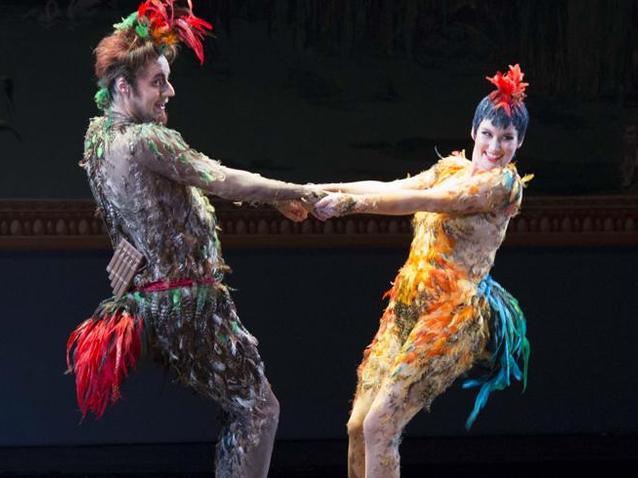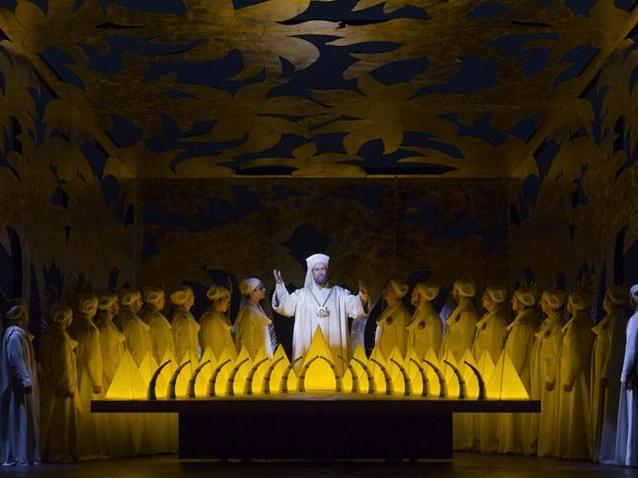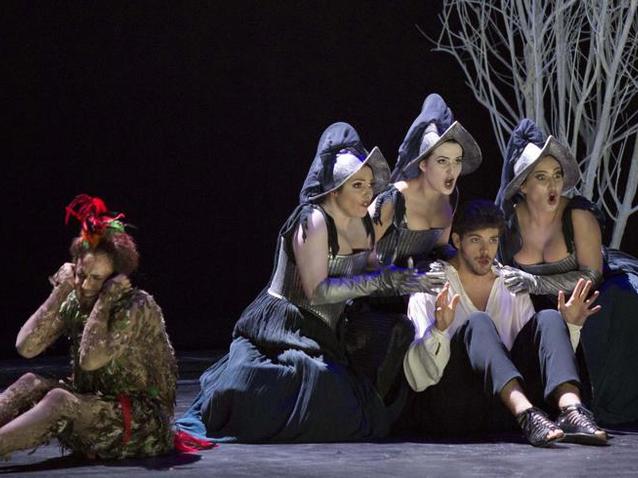 © DR
© DR
The Berlin iconic director Peter Stein has been put in charge of the main project of Teatro alla Scala Opera Academy for 2016: Mozart’s Magic Flute currently shown in Milan. Such end-of-summer productions (by now almost a tradition) provide the young singers enrolled in the program with a unique opportunity to test their talents on the main stage in the final segment of the Scala season.

The Director’s main aim has been to transform the singers-to-be in proper actors, remarkably apt at delivering the German spoken text of the Magic Flute, which, being a Singspiel, includes extensive and relevant dialogues. However experienced as opera director, Stein made a point of recovering the original flavor of Schikaneder’s fairy tale (also by reintroducing some often cut scenes). He actually reached his goals, if one should judge from the effective, amusing and comfortable acting of baritone Till von Orlowsky (Papageno) and, one step behind, his colleagues. Possibly also in order to concentrate on that specific aspect, the staging has been kept to a standard, classical production as far as sets and costumes and concerned. Quite strikingly, the show looked exactly as one would expect from the records of over two centuries of historical stagings and most traditional productions. All the machinery of Viennese “pop magic” theatre, with people and objects appearing and disappearing from above and below, frequent lightning and weird, loud stage noises has been kept as required in the original libretto, and much the same happened with the costumes, such as Papageno’s, complete with feathers and birdcages, or with fake animals, including the pairs of lions pulling Sarastro’s chariot. Nothing pretends to look true (neither the magic of the moonlit night, nor the groves, nor the sun rays in the final scene), enhancing by contrast the modernity of Mozart’s music. Yet the staging has been appreciated, as if Stein’s stepping back from a personal interpretation of the story allowed Schikaneder’s and Mozart’s Magic Flute to more clearly emerge in its original, sophisticated scope of grown-ups’ fairy tale.

The production relied on an overall very solid cast, which delivered a quite enjoyable Magic Flute. The weaker side seemed confined to the Three Ladies, quite often sounding shrill, while most singers showed promises, though of course still perfectible, such as Yasmin Özkan (Queen of the Night) and Martin Summer (Sarastro). The most notable performances came from the main couple: Martin Piskorski’s Tamino delivered a pleasant presentation aria, showed a staunch dramatic attitude in confronting the Priest, and exhibited a ringing voice all through the opera. Beside him, Egyptian Fatma Said’s charming Mediterranean figure Pamina acted convincingly, displayed a flawless German diction and most of all offered empathic expressions of her deep inner life both in Finale I («Ich bin zwar Verbrecherin», «I am indeed guilty») and in her II Act aria («Ach ich fühl’s, es ist verschwunden!», «Ah, I feel it, it has vanished»), intense and stylistically appropriate, until a most close («So wird Ruh’ im Tode sein», «Then peace will come in death»).
The musical direction was entrusted to Hungarian conductor Ádám Fischer, exactly 30 years after his debut at La Scala – with The Magic Flute. Fischer conducted masterfully, obtaining from the Academy Orchestra a specific sound quality: radiant, energetic and bouncing, transparent, soft and sweet at the same time, effectively administering and balancing dynamic contrasts throughout the score, so that the orchestra never overplayed the singers. Always very accurate in working out details, making nuances emerge, the orchestra contributed to the emotional power of pages such as Tamino’s confrontation with the Priest in Act 1, provided Monostatos’ aria from Act 2 with a thrilling pianissimo background, introduced the audience into another world through the march which opens Act 2: a world of naïve, faithful yet committed imagination.
Raffaele Mellace
the 19 of September, 2016 | Print
Comments